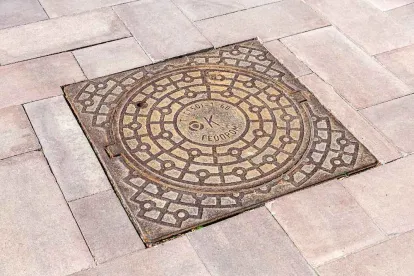The Maryland Department of the Environment (MDE) has been trying for some time to require counties that operate municipal separate storm sewers (MS4s) to require “restoration” of impervious surfaces in order to obtain a National Pollution Discharge Elimination System (NPDES) permit for the discharge of stormwater from those MS4s. MDE has adopted this approach to satisfy, in part, the State’s obligations to comply with the Chesapeake Bay Total Maximum Daily Load for nutrients and solids under the federal Clean Water Act. MDE administers NPDES permitting in the State. In 2019, we noted on this blog the Maryland Court of Appeals’ decision in Md. Dep’t of the Envt. v. County Comm’rs of Carroll County, 214 A.3d 61 (Md. 2019), cert. denied, 140 S. Ct. 1265 (2020), for the most part upholding individual MS4 permits to Frederick and Carroll Counties.
MDE issued a “general permit” (that is, a permit issued in the same form to all similar permittees) to “small” MS4 operators – those serving a population of less than 100,000 people. Last month, the Court of Special Appeals – Maryland’s intermediate appellate court – ruled on a challenge to those permits. Maryland Small MS4 Coalition v. Md. Dep’t of the Envt., No. 1865, Sept. Term 2019 (Md. Ct. Spec. App. Apr. 29, 2021). The opinion is notable for its quotation of Talking Heads’ Once in a Lifetime, but that’s not really the point.
For the most part, an MS4 is only regulated if it receives stormwater from an “urbanized area.” Some counties operating small MS4s contain very little “urbanized area.” Further, the general permit required the permittee to take steps to “restore” an area of impervious surface equal to 20 percent of the impervious surface in that urbanized area. That requirement applied even if the impervious surface in the urbanized area did not drain to the county-owned storm sewer; for example, a warehouse, shopping center, or residential development might have its own storm water system.
The court held that MDE did not act arbitrarily or capriciously simply because it subjected the entire MS4 to the permit even though most of its drainage was not urban, or because MDE imposed the 20 percent restoration requirement in a way that required restoration of surface outside the urbanized area. However, the court held that MDE had not provided sufficient advance notice of its rationale for doing so, and therefore the permit had to be remanded to receive additional comments from the objecting counties. Presumably, MDE would be required to consider points raised and the arbitrariness of its decision would be subject to further challenge on any new grounds.
This whole effort imposes direct obligations on counties and other municipalities that operate storm sewer systems. However, the ultimate obligations may land on those who own or develop parcels with large amounts of impervious cover. How that plays out and exactly how much runoff from existing pavement or rooftops will have to be infiltrated or otherwise managed may be a county-by-county issue. Stay tuned.



 />i
/>i

